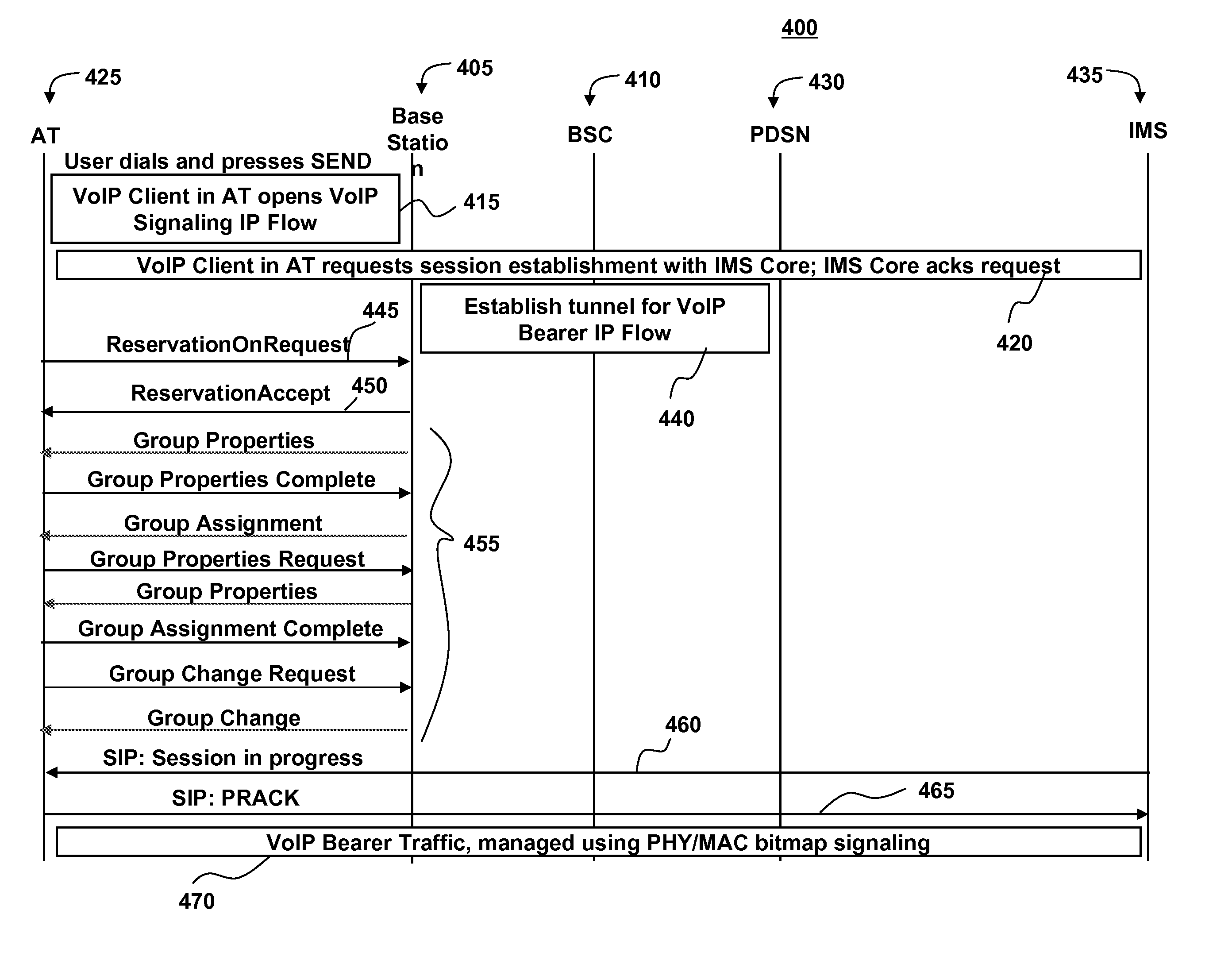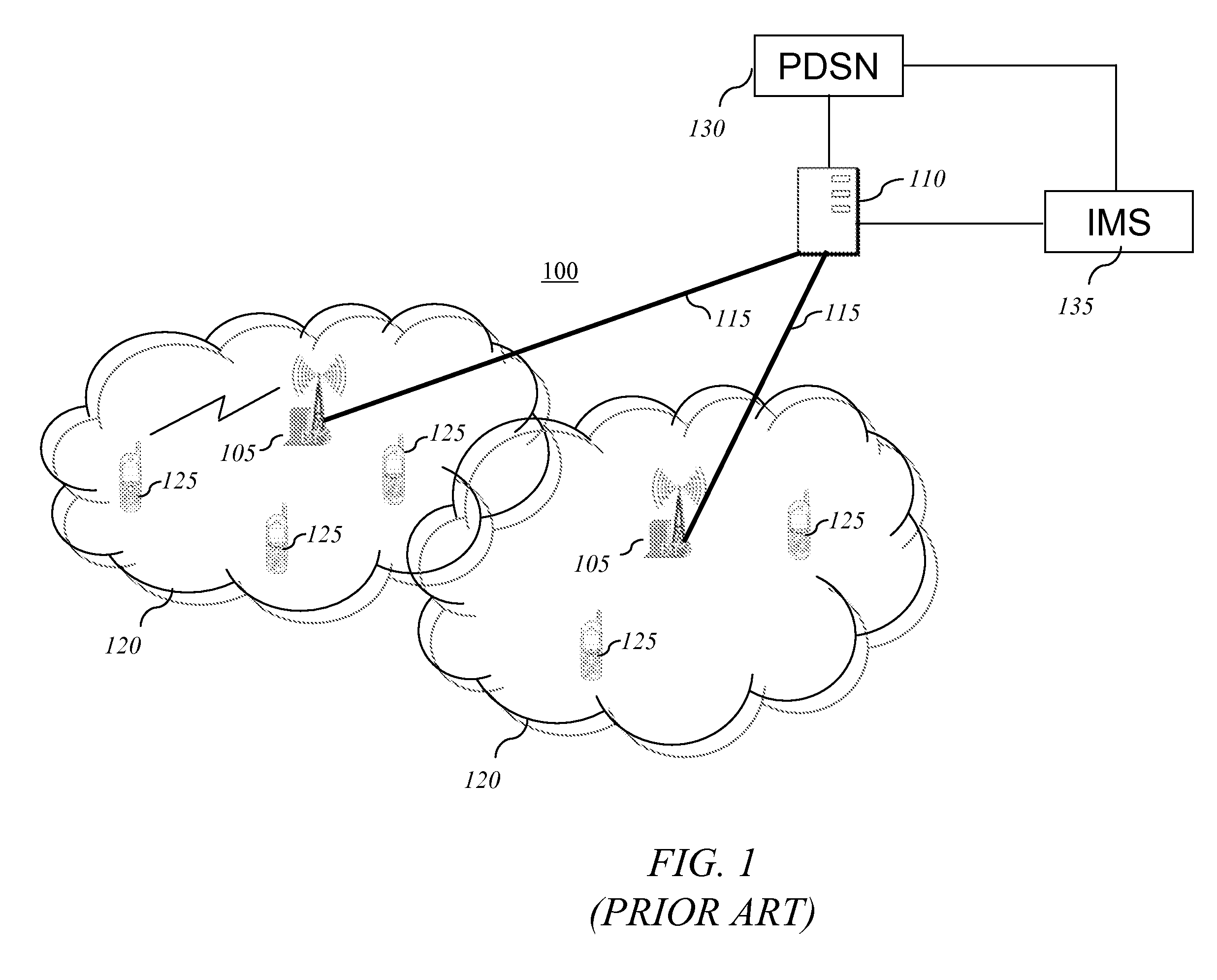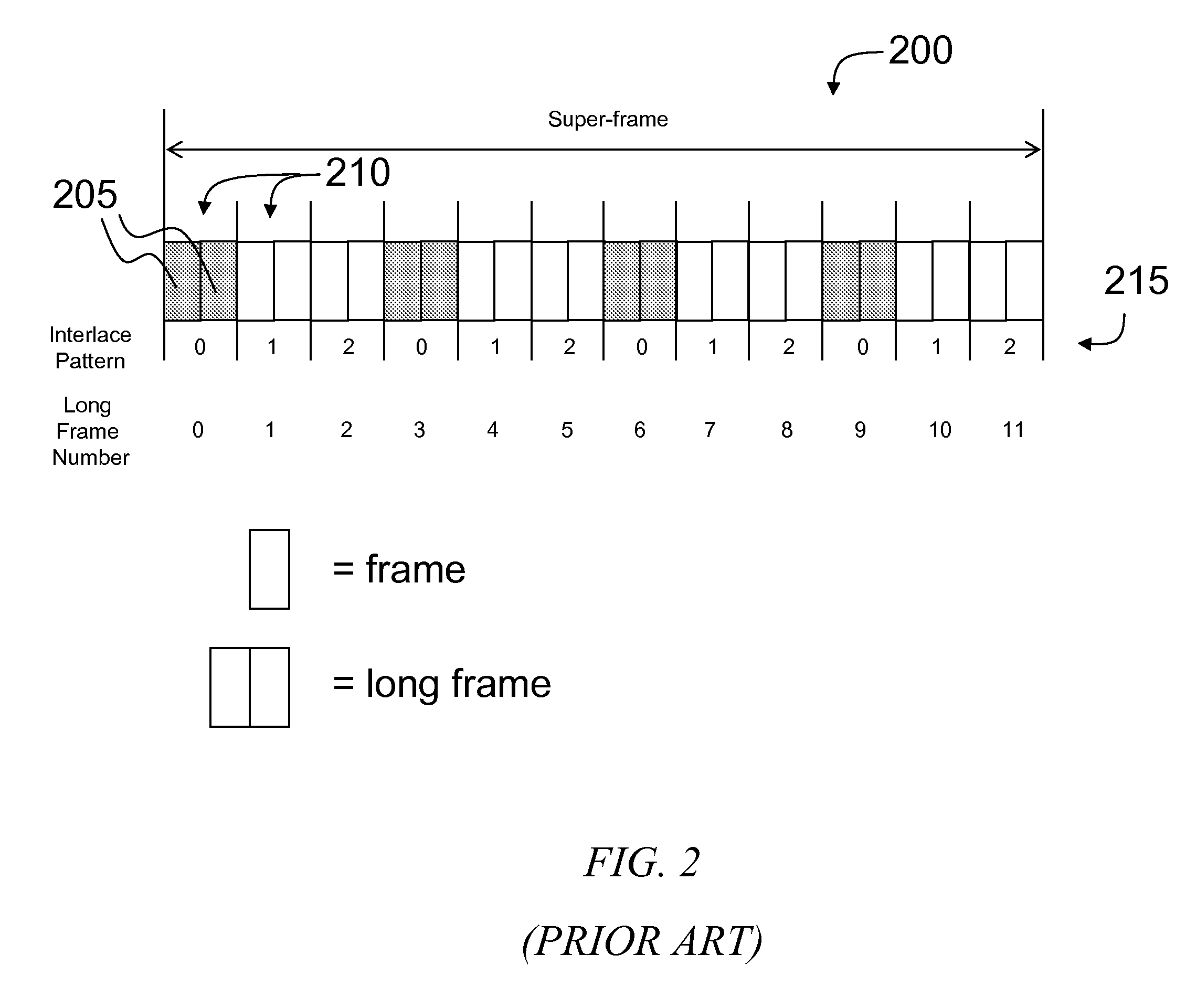Method and system for processing group resource allocations
a technology of resource allocation and group allocation, applied in the field of radio frequency resource allocation, can solve the problems of reducing system efficiency, burdening control mechanisms and resources of voip, voip wireless communication system,
- Summary
- Abstract
- Description
- Claims
- Application Information
AI Technical Summary
Benefits of technology
Problems solved by technology
Method used
Image
Examples
examples
[0057]Below are illustrative examples of the operation of the scheduling group control channel messages described above, according to some embodiments of the present invention. For purposes of brevity and clarity, some of the fields described above of the scheduling group control channel messages are deleted from and are not described in the present examples.
[0058]Consider that at time 0, the AT 425, having MAC ID ‘111100001111’, does not have any Group Properties stored in its memory. Further, at time 0, the base station 405 transmits a first GP message 500 having the following binary field values:[0059]GP Message ID=‘001’;[0060]GP Message Sequence=‘001’;[0061]Group ID=‘001’;[0062]Number of Blocks=‘100’;[0063]First Block=‘001’.
[0064]At time 0, the AT 425 successfully receives and processes the first GP message 500, so it stores the second through fourth values above in memory and transmits a Group Properties Complete (GPC) message 700 to the base station 405 with the following bina...
PUM
 Login to View More
Login to View More Abstract
Description
Claims
Application Information
 Login to View More
Login to View More - R&D
- Intellectual Property
- Life Sciences
- Materials
- Tech Scout
- Unparalleled Data Quality
- Higher Quality Content
- 60% Fewer Hallucinations
Browse by: Latest US Patents, China's latest patents, Technical Efficacy Thesaurus, Application Domain, Technology Topic, Popular Technical Reports.
© 2025 PatSnap. All rights reserved.Legal|Privacy policy|Modern Slavery Act Transparency Statement|Sitemap|About US| Contact US: help@patsnap.com



